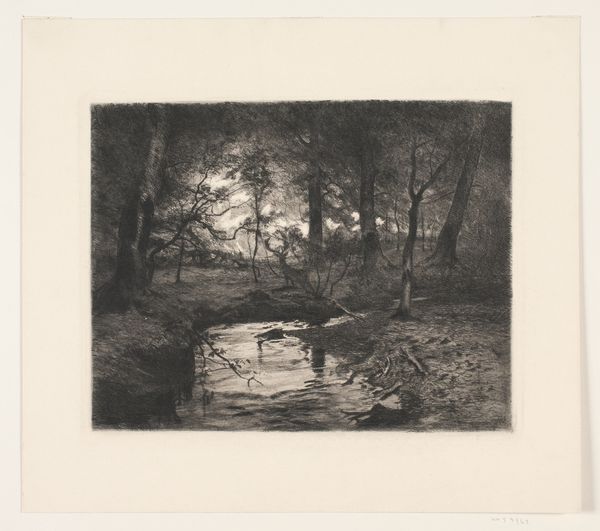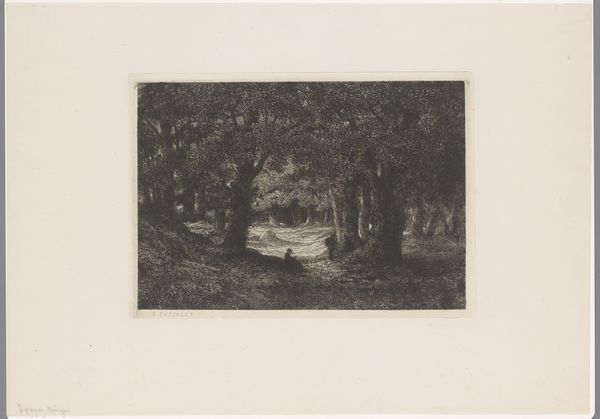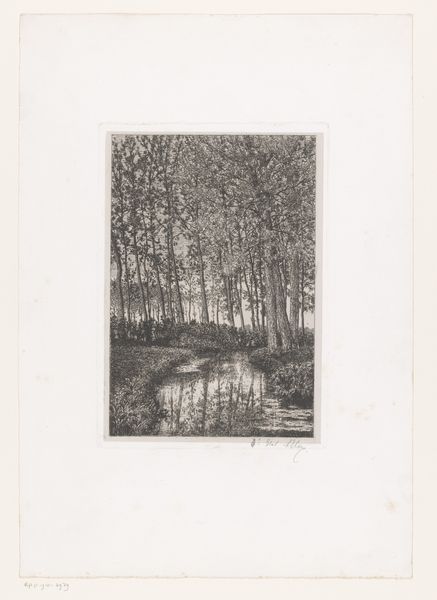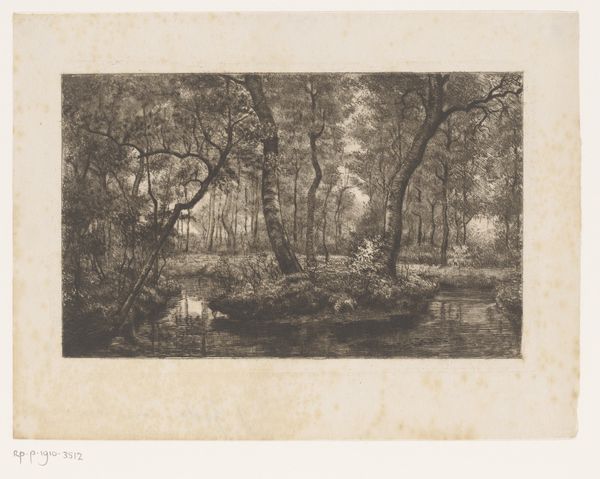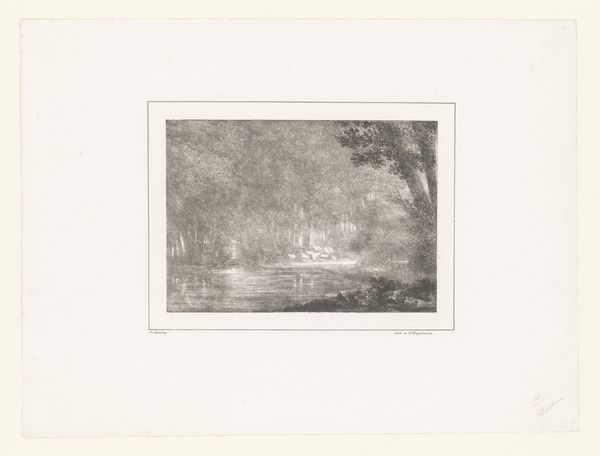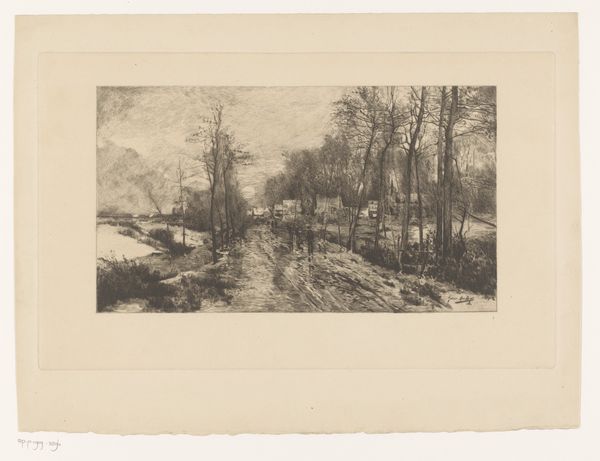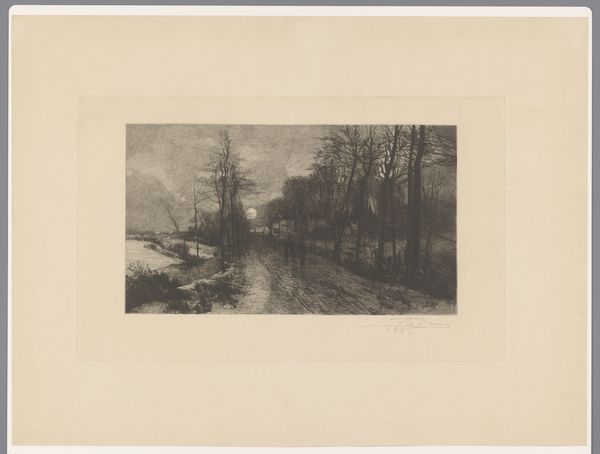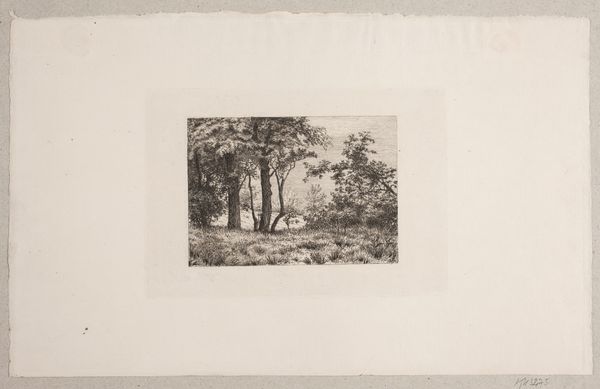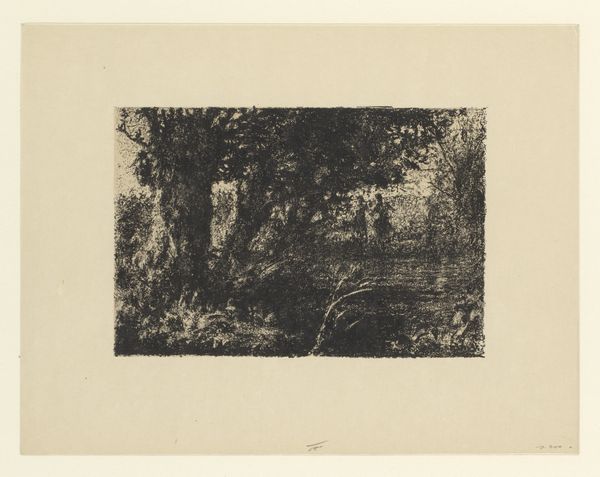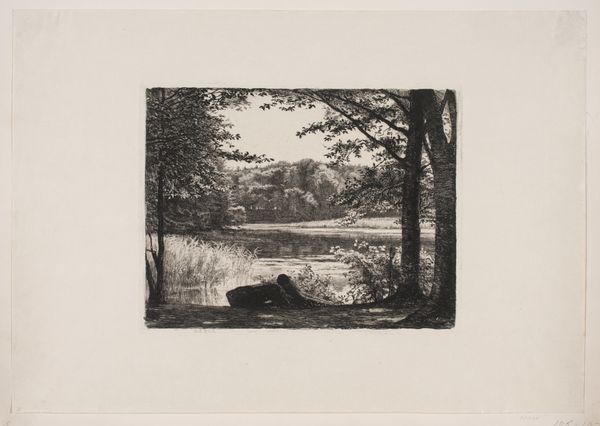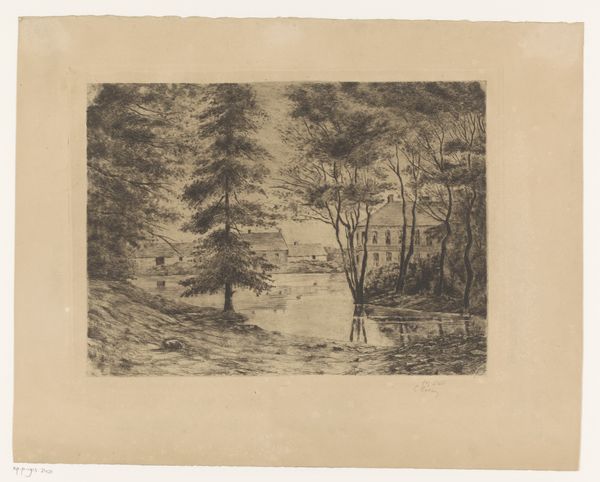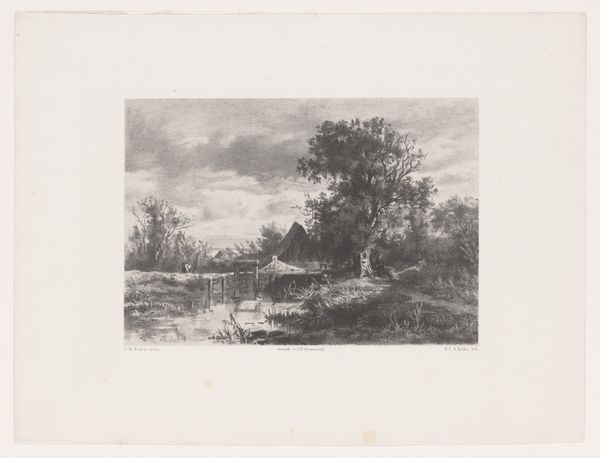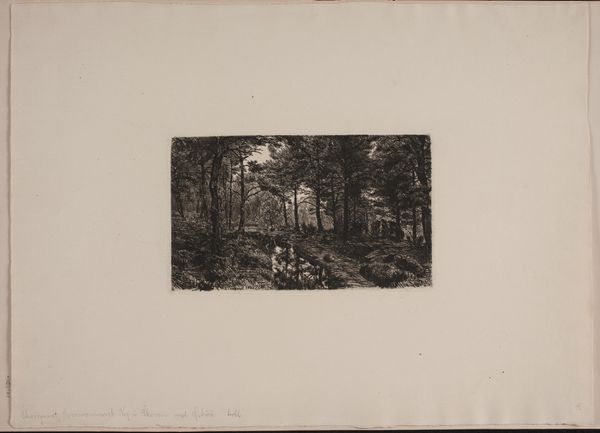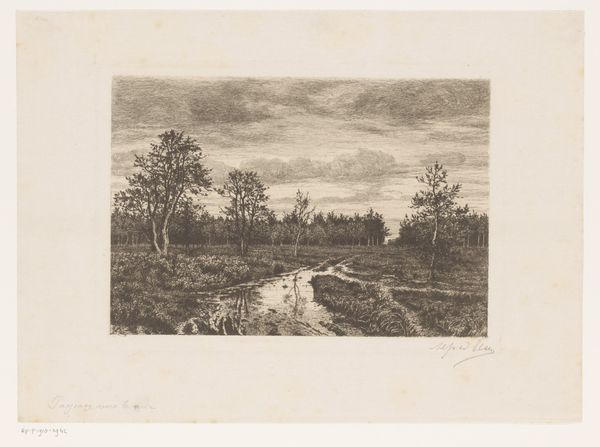
Dimensions: 221 mm (height) x 268 mm (width) (plademaal)
Curator: Let’s consider Thorvald Niss’s 1898 etching, “Aa i Borrevejle Skov,” held here at the SMK. It captures a quiet scene in the Borrevejle Forest. Editor: Oh, it's got that hushed, almost haunted quality, doesn't it? The light shimmering on the water, those tangled trees… it feels like stepping into a forgotten fairytale. Curator: Niss, deeply involved in the artistic and intellectual currents of his time, created this piece as part of a larger movement that grappled with ideas of national identity and the romanticization of nature, something especially potent in late 19th-century Scandinavia. We can view the forest as a reflection of deeper cultural anxieties. Editor: Anxieties maybe, but I feel the solitude. You know, like those childhood forts you'd build – a secret world known only to you. It is just me thinking that he really knew how to etch that water... like a perfect silver mirror. Curator: The etching technique is also significant. During this time, printmaking was increasingly accessible, allowing for broader dissemination of artistic visions and, of course, reflecting burgeoning democratic ideals. Editor: Democracy of the woods! I love that. He makes you want to touch that light, see if it’s real. And something about the monochrome tones adds such mystery, a whole spectrum contained. Did everyone back then think forests held a key? Curator: It's more than just a key; for Niss and his contemporaries, the forest represented an authentic link to their cultural and historical past and it symbolized a kind of refuge. Examining this through the lens of ecocriticism also reveals how artists portrayed human engagement with nature during rapid industrialization. Editor: Okay, okay, ecocriticism… Got it. For me, though, it still whispers of simple escape. You know, finding wonder in a tiny stream and the weird-shaped branches... I'd bet Niss felt that too when his pen touched that copper. Curator: And isn’t that the beauty of art? It gives access points, bridging individual emotions to wider historical understanding and inspiring questions about nature, selfhood and cultural inheritance? Editor: Absolutely! I might still prefer my fairytale escape but getting all that history just makes the forest feel deeper and stranger now.
Comments
No comments
Be the first to comment and join the conversation on the ultimate creative platform.
